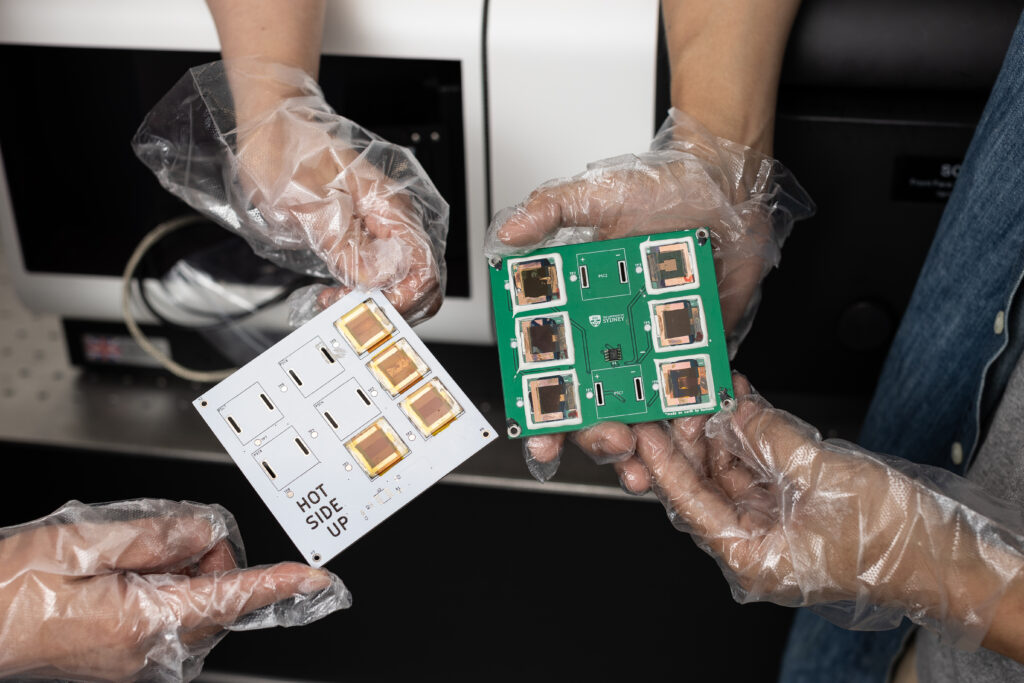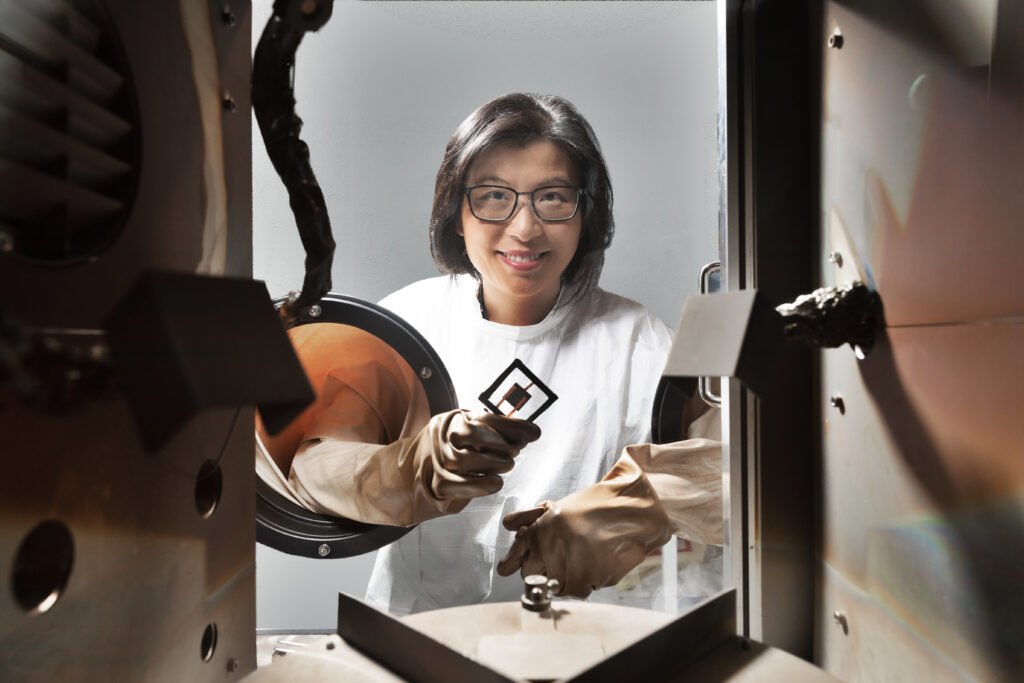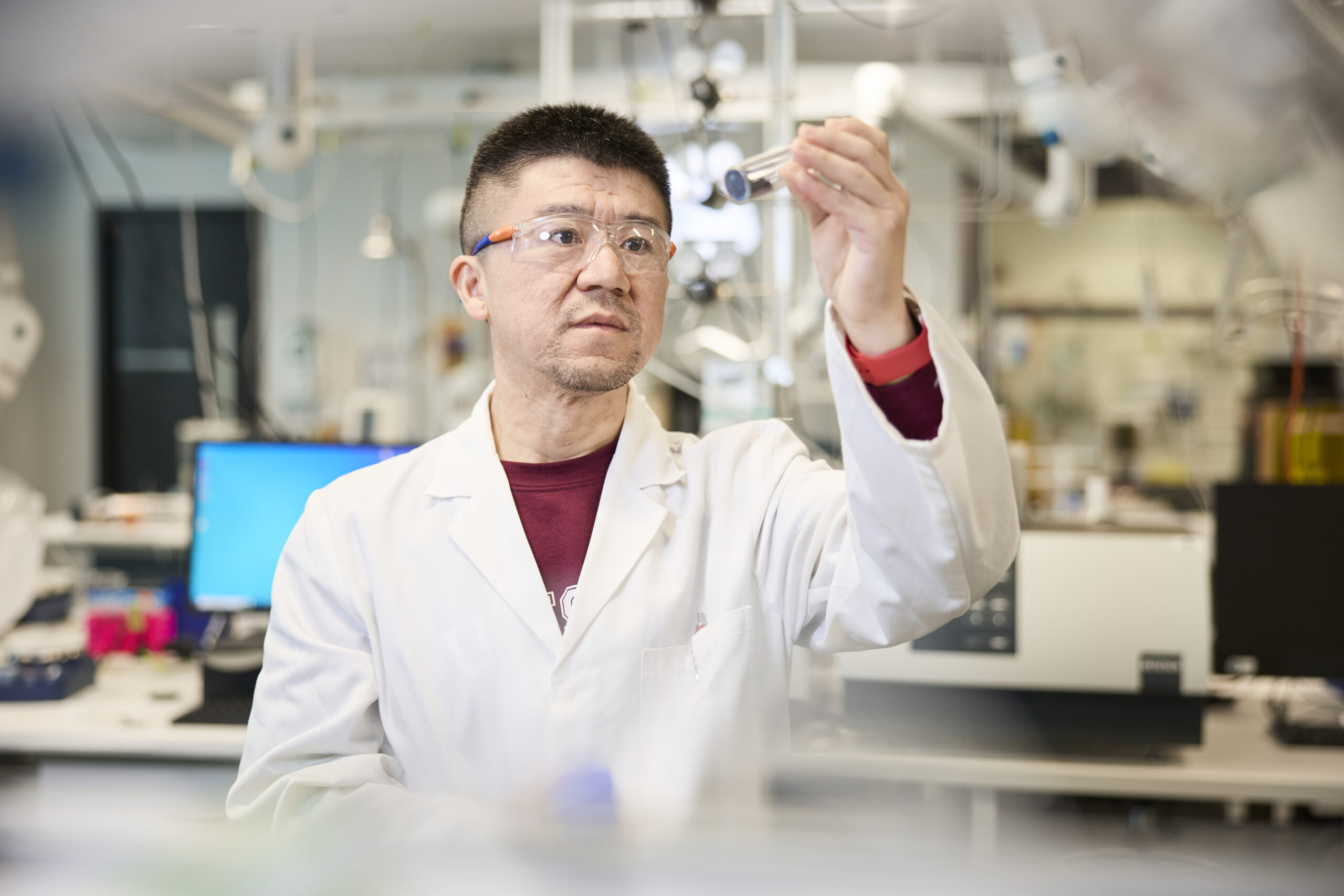One step closer to an ultra low cost solar future
Projects funded by ARENA are bringing the nation closer to a future where ultra low cost solar will be the backbone of the clean energy transition.

A fusion reaction occurs within the Sun’s core, a photon of light is born.
For 10,000 to 170,000 years, the photon staggers from atom to atom before it reaches the Sun’s surface to begin its journey outward.
At 300,000 kilometres per second, it shoots out into the cosmos. In 8 minutes and 20 seconds it travels 151 million kilometres to reach Earth.
Punching through the atmosphere, the photon rains down and solar panels across Australia begin their work. Each solar cell on the panel absorbs the light and begins the photovoltaic effect (PV). The effect takes the energy stored in the photon of light, turning it into electricity.
The electricity is then used or kept in storage.
In only one hour, photons hitting the Earth’s surface give a year’s worth of the world’s energy needs. If we average out the amount of solar energy coming to Earth in a year, it amounts to around 44 quadrillion watts of power.
To put this amount of solar energy into context, a large power plant creates about 1 billion watts of power. You would need 44 million of these power plants to match the energy from the Sun.
For ARENA solar energy is a critical technology for the clean energy transition.
ARENA strives to shift Australia’s renewable energy landscape to make renewable electricity and new technologies cheaper.
ARENA funded the first-generation large-scale solar farms in 2016. At the time the cost of electricity from solar farms was between AUD $140 to $178 per megawatt hour (MWh). Because of the investment and the lessons learnt, the price dropped from AUD $50 to $80 per MWh.
30-30-30
But there is still more that needs to be done to ensure solar can become the backbone of the clean energy transition.
In 2023, ARENA’s 30-30-30 vision to bring Ultra Low Cost Solar (ULCS) to Australia was detailed in The Incredible ULCS Ultra Low Cost Solar Whitepaper Report.
The goal is simple: create 30% solar module efficiency with an installation cost of $0.30 per watt by 2030 to reduce the cost of electricity to under $20/MWh, and to make ULCS the backbone of Australia’s future energy system.
ULCS differs from current solar technology by being:
- more efficient at converting sunlight to energy
- cheap to manufacture from affordable, abundant, safe and stable materials and deployed in a highly efficient and automated manner
- needing little ongoing maintenance due to high reliability
- longer lifetime than today’s solar PV technology
- a low financial risk and financed at low rates by world’s largest financial institutions.

According to the whitepaper report, Australia needs innovation to make ULCS a reality. It needs innovation in solar panel technology but also in other spaces that are outside of technological advancements, known as non-technology enablers. This includes end-of-life management for solar panels, scaling supply chains and manufacturing.
Projects like Dr Anita Ho-Baillie’s, a world leading expert in solar cell research and Dr Yansong Shen, a professor in Chemical Engineering at the University of New South Wales (UNSW) are perfect examples of how ARENA is funding research and development in this space. Both of their projects are part of an ecosystem of innovation funded by ARENA to build brick-by-brick the ULCS future.
Both were recent finalists for the Eureka Prize Award, Australia’s most prestigious award in research and innovation in various scientific fields. They also received funding from ARENA’s ULCS and Transformative Research Accelerating Commercialisation (TRAC) programs for their projects, as a part of the Agency’s focus in the solar panel space.
Dr Baillie’s research
Current solar technology is dominated by silicon cells on solar panels. They are the small square boxes strewn across the top of solar panels and are the key material to absorb photons from sunlight to then convert into electricity through the photovoltaic effect.

‘The maximum efficiency of the silicon solar cell is around 29% and you can’t go over that because of the way silicon absorbs and converts sunlight,’ Dr Ho-Baillie said.
Silicon has an inefficiency problem.
Photons can come in various wavelengths which gives them a light property and colour. There is red, orange, yellow, green, blue and various other wavelengths on the photon spectrum. These other wavelengths have higher energy yields, but silicon can only convert ‘some of it, but not all of it and what happens is this energy dissipates and is lost through heat,’ Dr Baillie said.
The solution to this is to stack another material on top of the silicon to convert the higher energy photons more efficiently. They are known as tandem cells. In Dr Baillie’s project she is stacking silicon with perovskite.
‘The theoretical limit of this technology is 40% and we hit the 30% milestone mark, which is incredible. We’ve really broken the ceiling for silicon,’ Dr Baillie said.
Dr Baillie is being humble. Her research is 1 of 8 globally who’ve produced tandem solar cells that can convert 30% of sunlight energy into electricity. It’s a significant milestone and a first in Australia. Dr Baillie’s research was verified by the National Renewable Energy Laboratory in the United States.
Funding from ARENA helped pave the way for her research and success and the clean energy transition the agency is taking step-by-step.
‘Our work has been supported by ARENA at Sydney University since 2020 through the photovoltaics research and development round and they continued to support us through the TRAC round,’ Dr Baillie said.
Part of Dr Baillie’s research also focused on core ULCS strategy points such as the durability, manufacturability, stability and long-life cycles of the tandem cells.
‘Perovskite in the very, very early days don’t [sic] last very long. And now we can make, not just perovskite but perovskite silicon tandem, to pass quite a lot of the industry standard tests,’ Dr Baillie said.
To accomplish this, Dr Baillie and her team accelerated the wear and tear on the tandem cells by exposing them to high and low heats over 200 cycles, which is supposed to mimic 25 years of use for the tandem cells. Dr Baillie said the cells she made were able to last 400 cycles, well above the industry standard.
Her research and innovation are small steps forward. The advancement assists ARENA’s work to create an ecosystem where solar panel technology is more efficient, stable, easy to deploy and has longer life cycles.
It’s a big step forward in solar cell efficiency which is a key marker of ULCS and ARENA’s 30-30-30 vision.
The next challenge is to replicate Dr Ballie’s research on larger solar cells, which are 20 times larger than the ones used in her research. If achieved, it will be a game changer to the solar PV industry.
Dr Yansong Shen’s Research
ARENA has an opportunity to also focus on creating an ULCS ecosystem outside of technological changes. New ways of producing solar panels and their end-of-life management, manufacturing and change in business practices are also important for ULCS’ success. These are known as non-technology enablers which includes progress that isn’t technological.

A report from the Australian Centre for Advanced Photovoltaics (ACAP) found that solar panel waste levels will reach a crisis point in the next 2 to 3 years, not by 2030, as originally predicted.
Dr Shen received a grant from ARENA’s Research and Development program to investigate solutions to properly recycle solar panels within the clean energy transition.
‘My expertise in metallurgy was a very important tool that I could use to help to try to solve this problem,’ Dr Shen said.
‘We know the cumulative PV capacity is now very high and by 2050 we may reach 4500 gigawatts. That’s a very big number and this means by 2050 we may have a collective PV panel waste around 60-78 million tonnes. That’s a huge, huge number and if we do not treat them now, we need to landfill them and that could become a big, big environmental problem,’ Dr Shen said.
Dr Shen was tasked to find a solution to properly and efficiently recycle solar panels at the end of their life cycles through ARENA’s Research and Development program.
‘We need to solve this problem for the environmental consideration but also for the resources recovery and the other is policy and legal obligations,’ Dr Shen said.
The solution Dr Shen developed allowed for a better process to recycle and repurpose materials from the solar cells and panels.
His work showed how to separate 99 % of PV cell particles at the end of their life cycle.
‘The funding from ARENA was the first step in this project,’ Dr Shen noted. ‘The work ARENA is doing in this space with its funding is critical to our net zero ambitions,’ Dr Shen stated.
ARENA has a limited focus when looking into improving end-of-life management for solar but is considering innovative pilots and technology trials across the solar PV value chain like Dr Shen’s work. Sustainability and efficiency with zero emissions is the key in this area for ARENA and funding to accelerate research and innovation to commercialisation continues.
Small steps to a cleaner future
Although Dr Baillie and Dr Shen’s work are in two different phases of the solar panel life cycles, they are both very important steps forward for Australia and the clean energy transition, with ULCS as the backbone.
Australia can capitalise on ULCS’ potential and provide a cheap primary energy instead of fossil fuels. With ULCS in place, other industries that are proving difficult to decarbonise can use solar power to help in emission reduction efforts. The renewable electricity could be used in industrial processes, production of green hydrogen and synthetic fuels and other sectors throughout Australia’s NEM.
Solar and ULCS as its platform are ARENA’s focus and key to our net zero ambitions.

ARENA